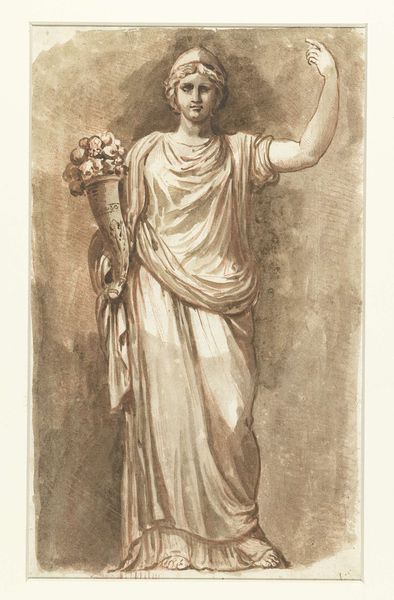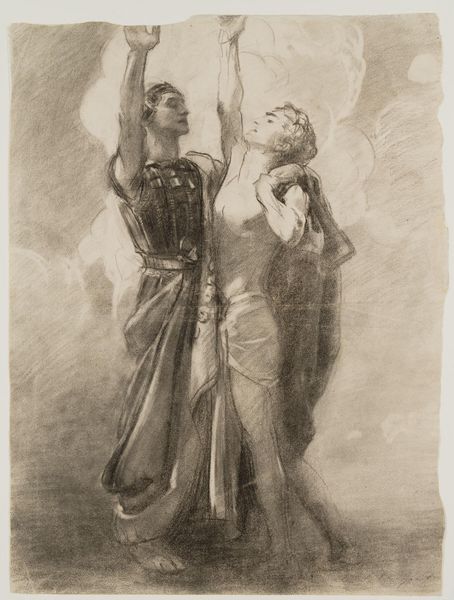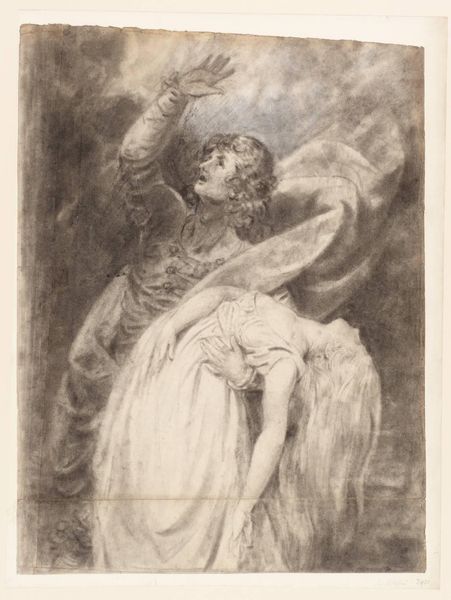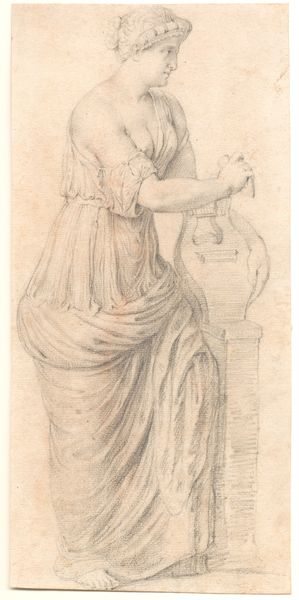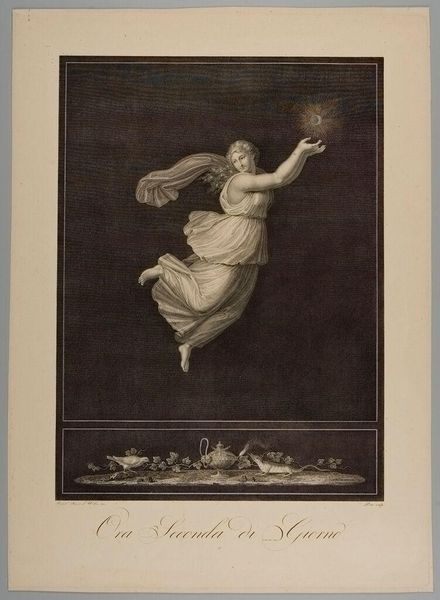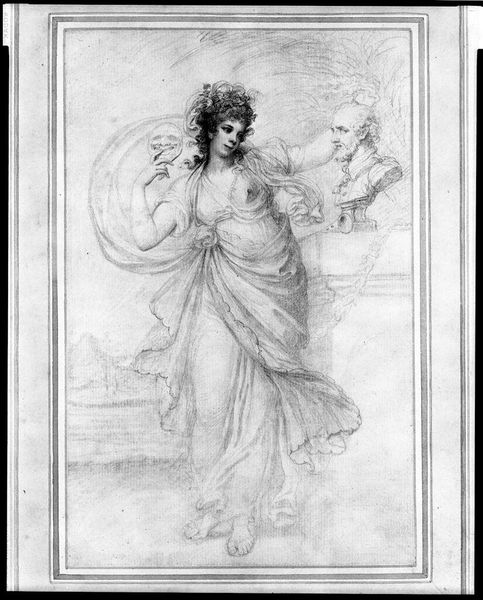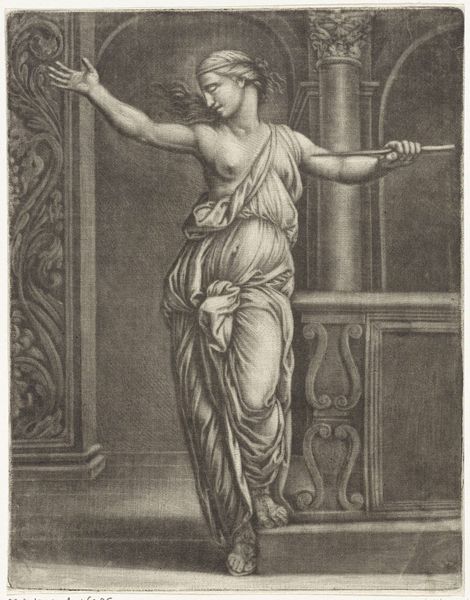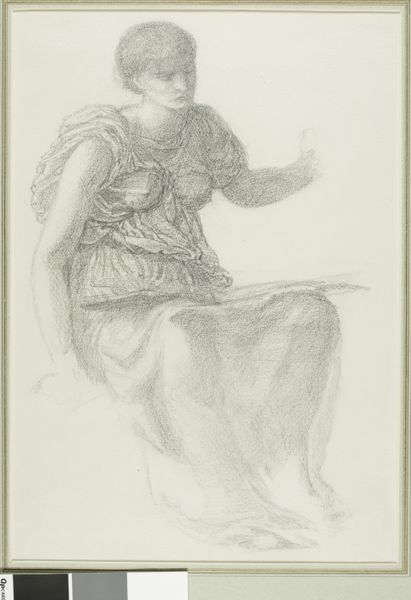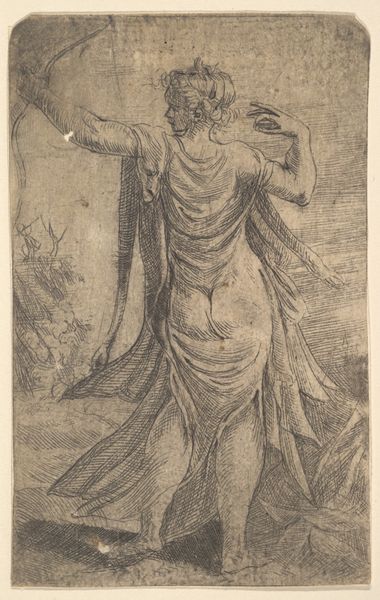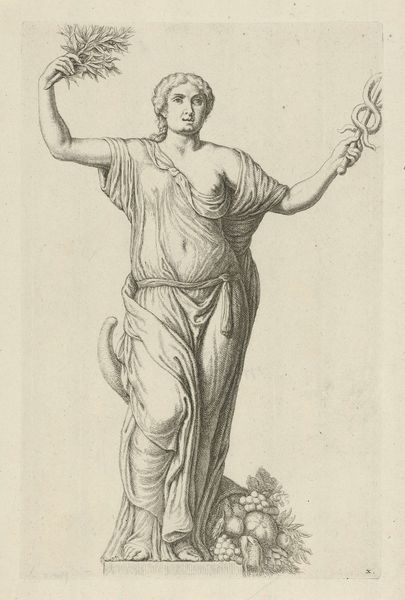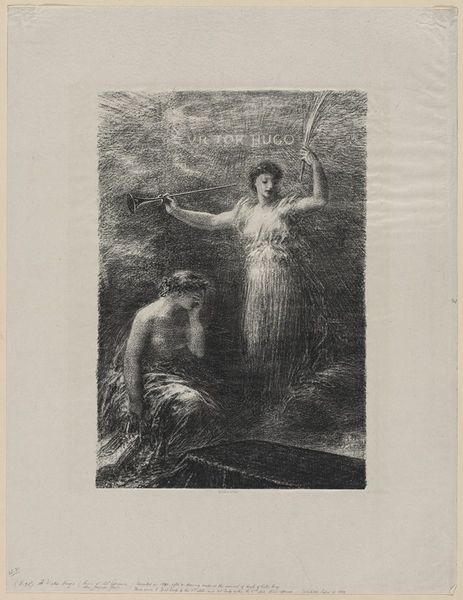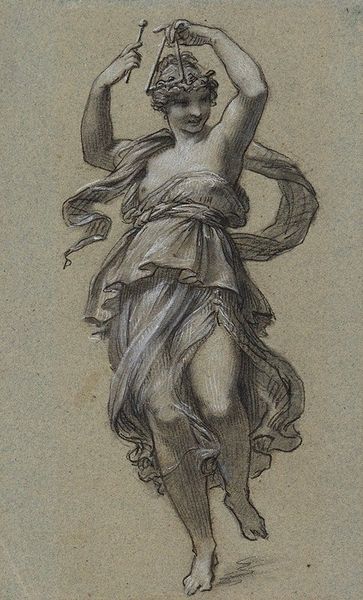
drawing, graphite
#
portrait
#
pencil drawn
#
drawing
#
neoclacissism
#
graphite
#
portrait drawing
#
history-painting
#
academic-art
#
graphite
Dimensions: height 455 mm, width 343 mm
Copyright: Rijks Museum: Open Domain
Curator: It strikes me immediately as a study in melodrama. The figure, draped in what appears to be classical garb, throws her arms wide in some combination of horror and defiance. There is so much dynamic movement. Editor: That's a wonderful entry point. This graphite drawing, attributed to William Hamilton, captures the celebrated actress Sarah Siddons, sometime between 1761 and 1801. She’s depicted here in the role of Euphrasia, from the play "The Grecian Daughter." Curator: Ah, that explains the implied regality of the crown she’s wearing. Her body language speaks volumes, despite being a seemingly simple portrait drawing. It almost transcends the conventions of portraiture to speak to larger themes. Is she running away from a threat, or confronting it? It seems we’re experiencing a crisis. Editor: Absolutely, Siddons was known for her powerful portrayals of tragic heroines. But beyond Siddons’s commanding stage presence, Hamilton’s drawing participates in broader cultural narratives. Think about how notions of female virtue, resistance, and public spectacle intersected in the 18th century, particularly within theatrical contexts. Curator: The sword held aloft... is she protecting herself? Or striking out against the powers arrayed against her. The theatrical nature, then, also opens questions around class and performance, doesn't it? The drawing might have reinforced or subverted the idea of a respectable woman on stage, making a spectacle of herself for an audience. Editor: Precisely. Hamilton uses recognizable imagery from classical antiquity, linking Siddons to ideas of heroism and martyrdom. I also notice how her loose hair contrasts with the more tightly controlled styles often favored in portraits of women during this era. Curator: What does the imagery carry in our cultural memory? That pose of agony has echoes in everything from history paintings to Hollywood film stills. In drawing from a familiar emotionality and symbol of Greek antiquity it asks us to grapple with similar narratives playing out still today. It seems Hamilton's drawing functions almost as a ready-made emblem, and its influence still registers now. Editor: It certainly does. I am left reflecting on what this reveals about representation, femininity, and historical drama. Curator: And for me it shows how potent and long-lived visual shorthand can be.
Comments
No comments
Be the first to comment and join the conversation on the ultimate creative platform.
